After spending two days in the Tokyo area to see the Kokufu exhibit, I took a day trip to Shizuoka to visit Kazuo Onuma.
Onuma is a grower who specializes in mini-sized bonsai. He’s been working with trees for twenty-five years and has been serious about it for the last fifteen. The effort has paid off.
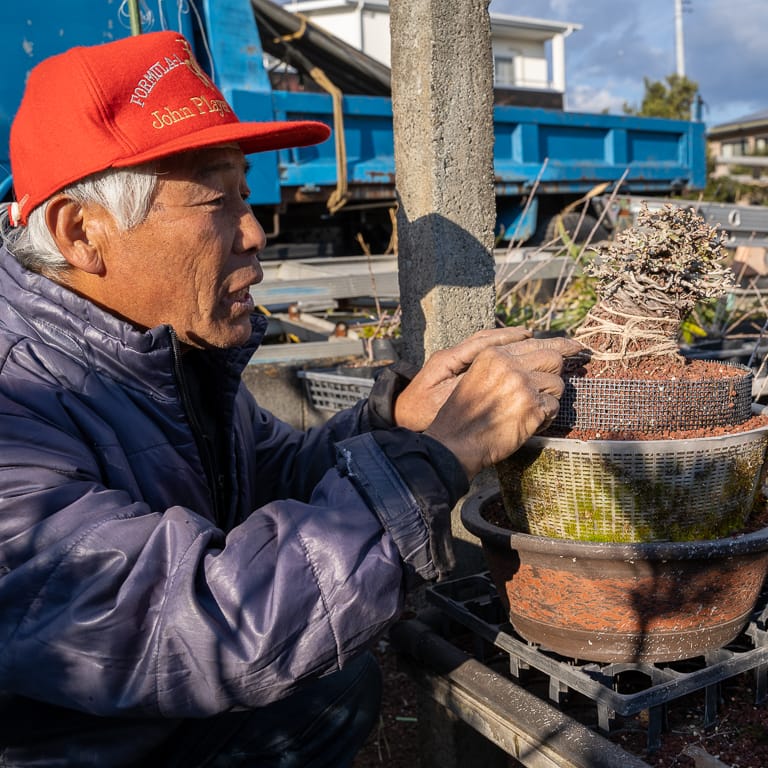
Onuma with a cutting-grown chojubai
Trees like the chojubai above aren’t anomalies in Onuma’s garden. A few steps away, several flats were filled with chojubai experiencing erosion that helps the trees produce shoots that can be trained as branches.
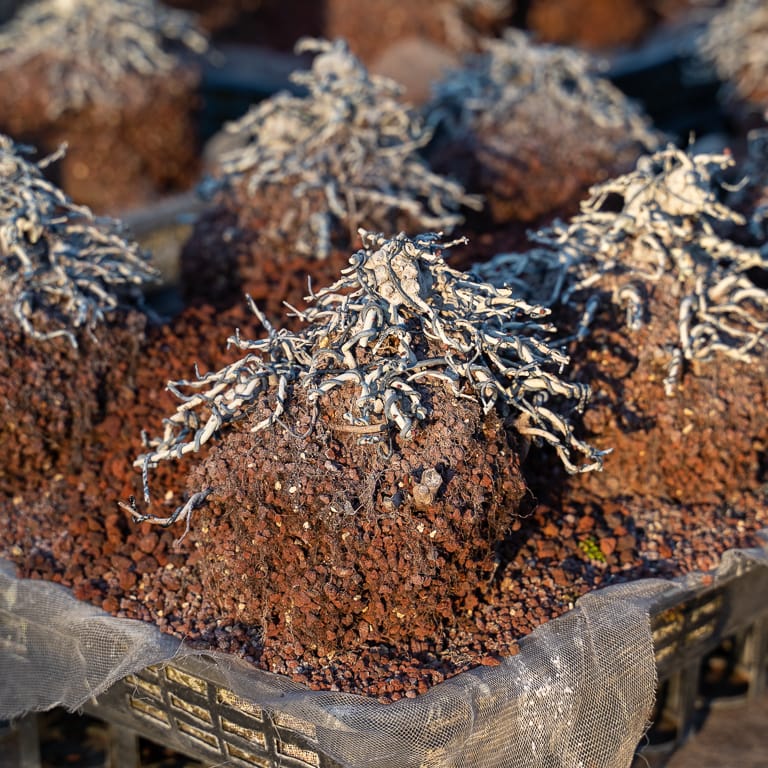
Japanese flowering quince ‘Chojubai’
Onuma is a charismatic man who has attracted friends and students who help in his garden. Together they form a bonsai family that work on the small trees together.
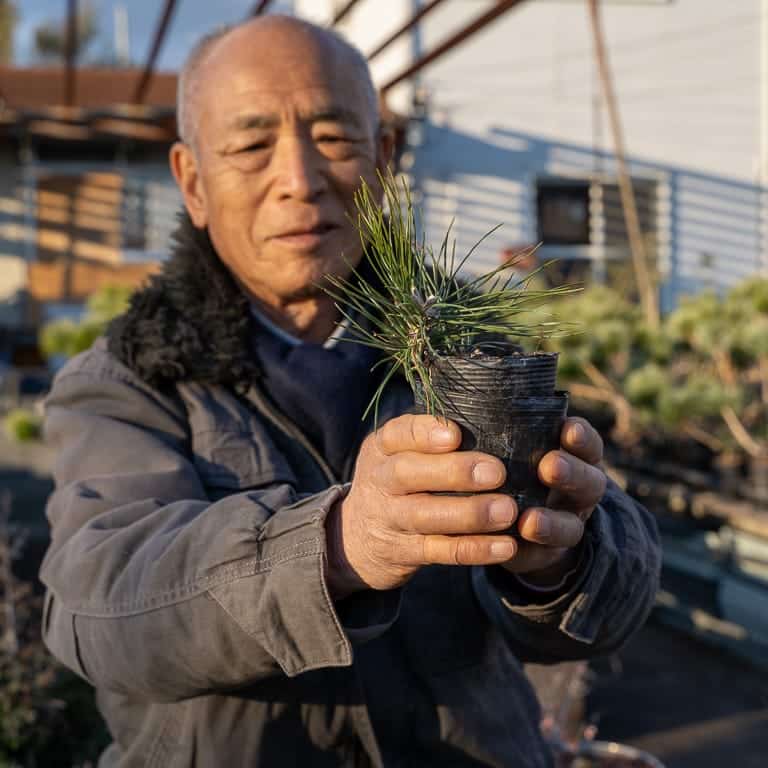
A member of Onuma’s circle with a young pine
Many of the more-developed pines in the garden followed a familiar pattern: dense branching below with a single sacrifice branch above.
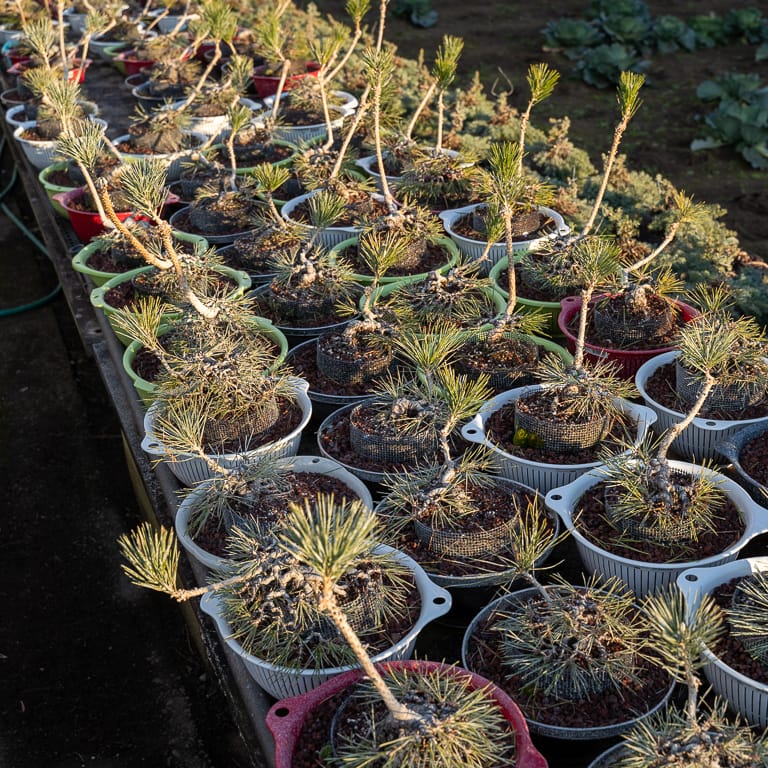
Pines in colanders
What’s less conventional is how many pines in the garden get their start: from air layers.
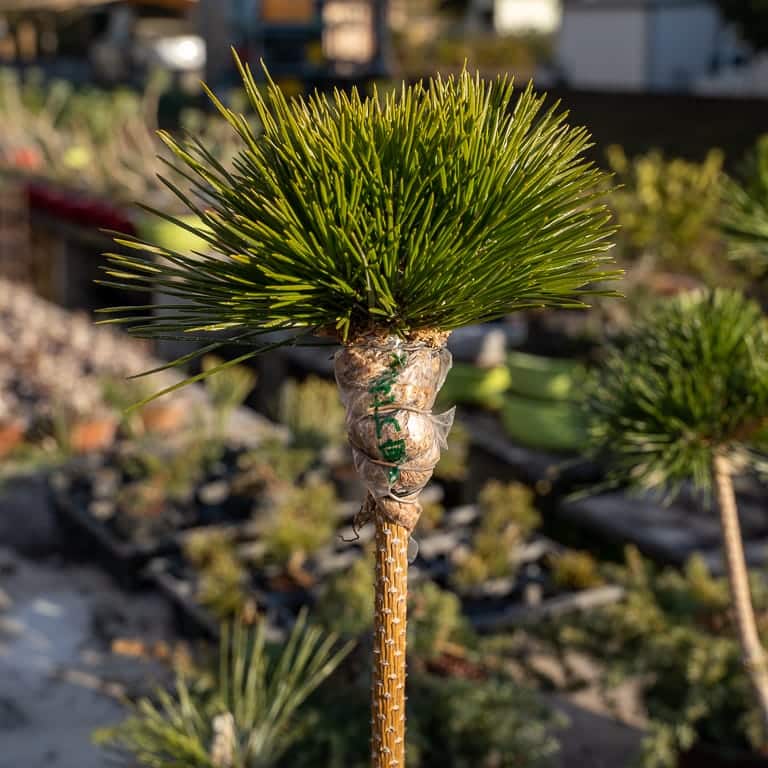
Air-layering a sacrifice branch to create a new pine
Layering sacrifice branches is a common theme in the garden. Onuma considers it wasteful to discard branches when they can jump start the creation of new trees.
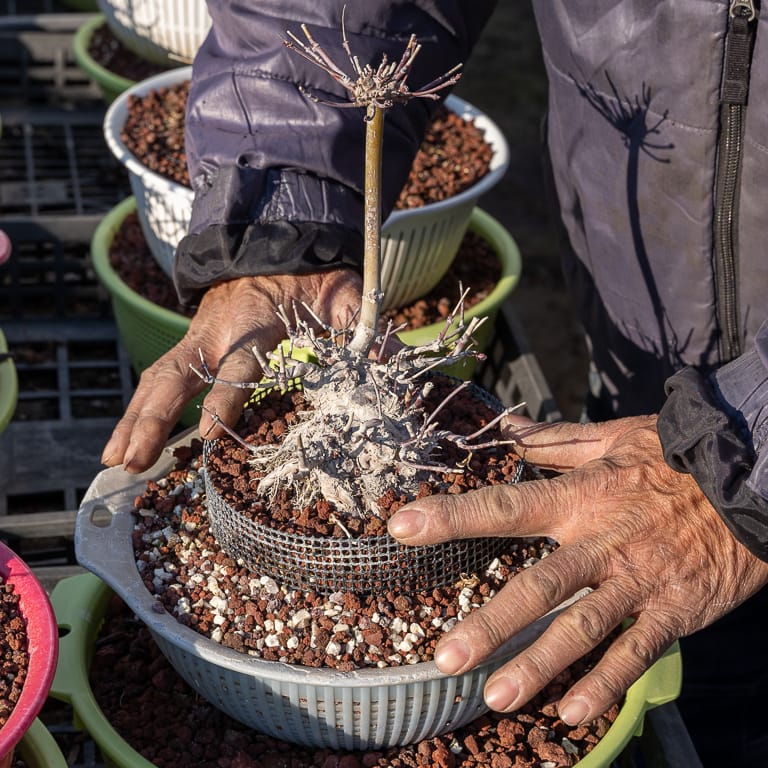
Japanese maple with sacrifice branch
Rows and rows of tables in the garden were filled with small trees that are just a few years away from looking like bonsai. Here, for example, is a table of tiny trident maples waiting to be thinned.
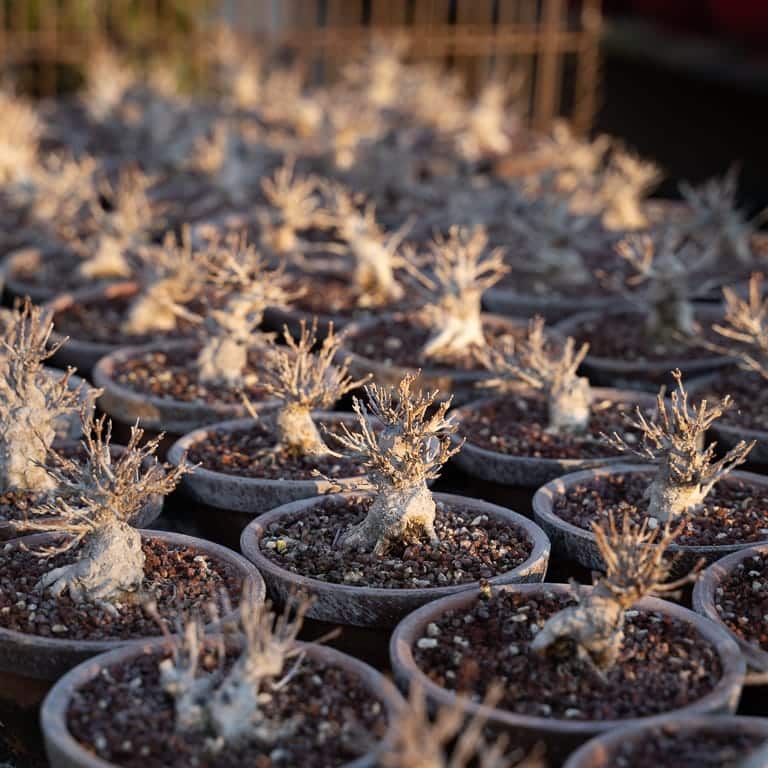
Trident maples
In just a few years they could like the more refined maple below.
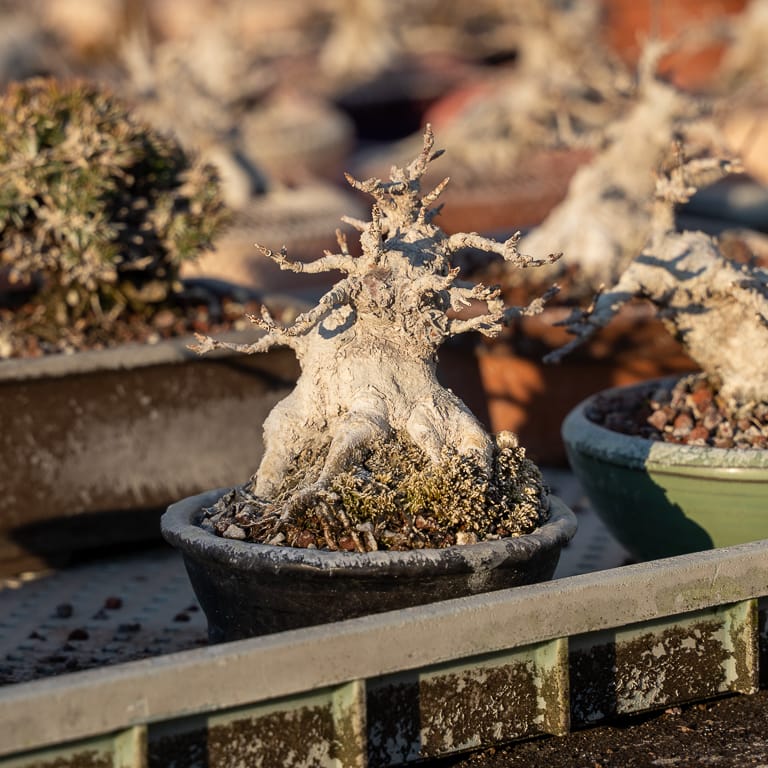
Mini-sized trident maple
Beyond the quince, pines, and maples in the garden, I found a broad variety of species, some of which I still don’t know the names. Here are some of the more familiar species: juniper and gardenia.
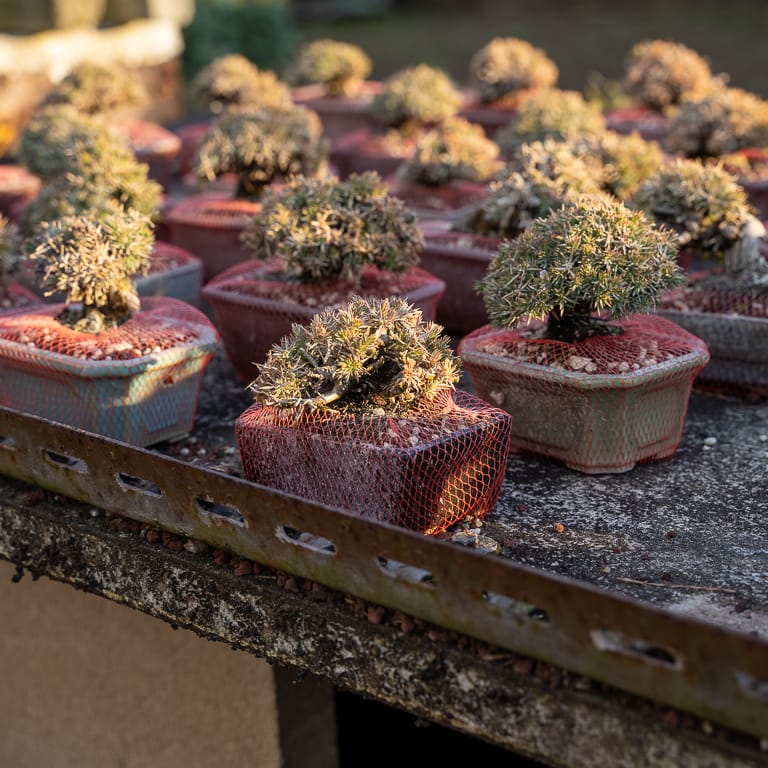
Needle juniper
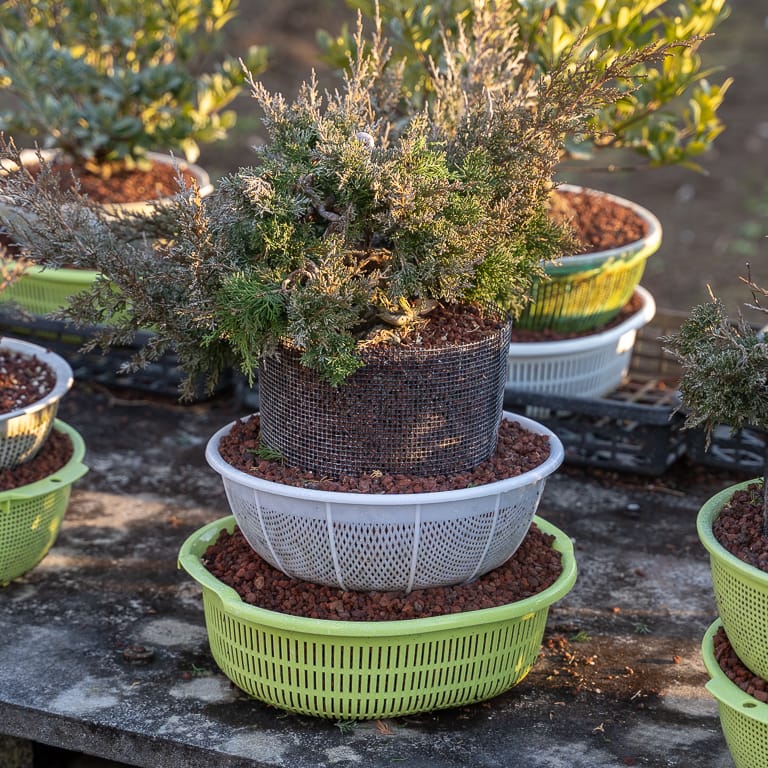
Shimpaku juniper
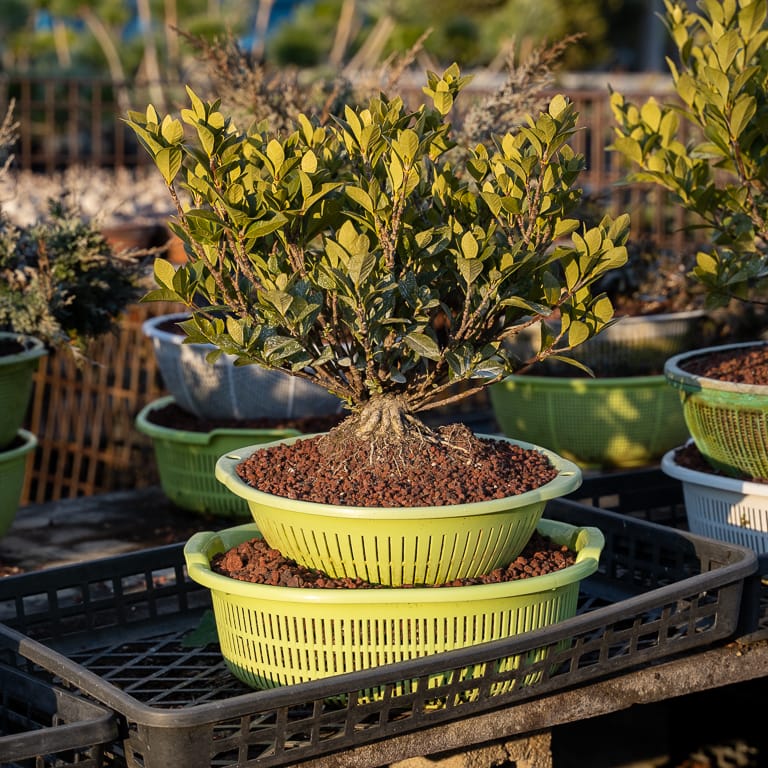
Gardenia
As the sun dropped below the horizon, Onuma extended an invitation to stay for dinner: wild boar nabe cooked over an open fire. How could I refuse?
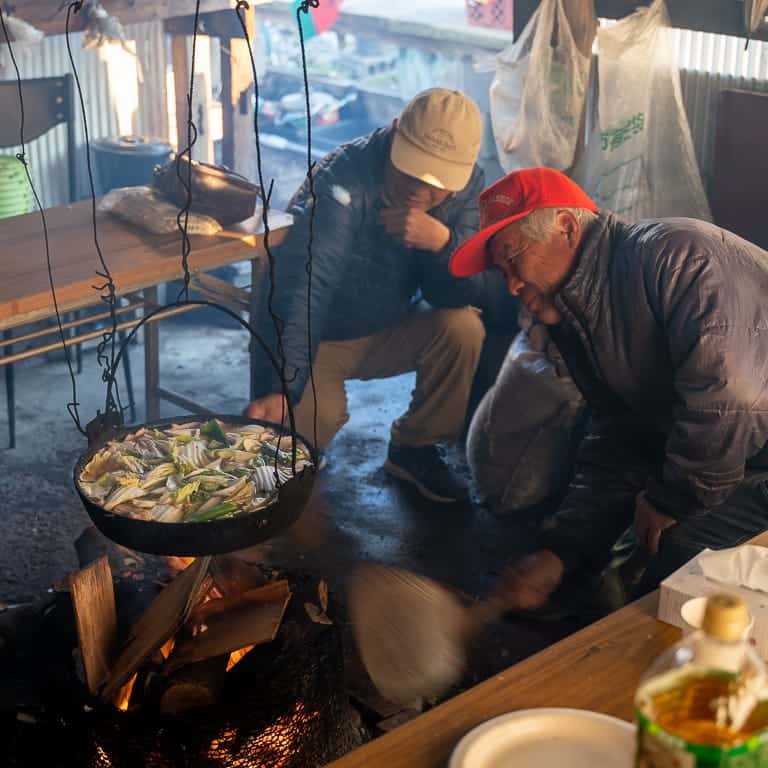
Preparing the wild boar nabe
By the time the nabe (“nah-beh”) was ready, the sun had fallen. As there was no light in the workshop, we ate our soup by the light of the fading embers. It was delicious!
Launch Event at Book’s Inc in Alameda next week!
Stop by Books Inc. in Alameda on Wednesday, March 4, at 7pm for a brief demo, interview, and Q&A relating to bonsai and my new book, The Little Book of Bonsai. Drop by and say hello if you’re in the neighborhood – It’ll be great to see you!
Learn more about the event at the Books Inc. events page.
Subscribe to Bonsai Tonight
New Posts Delivered Every Tuesday and Friday
Darth Masiah says
Wow! An amazing place for small bonsai lovers. I wish there were more pictures. Thanks for sharing.
GARY says
Did you ask him why he has a tree in a colander, on top of a colander, on top of a colander? I’ve never seen that.
Jonas Dupuich says
Hi Gary – will say more about that in the next post.
Wayne says
Hi Jonas
Great pics! Those little maples are so juicy and I love the home rigged cooking apparatus
Do you speak some Japanese?
Thanks!
Jonas Dupuich says
Thanks Wayne! Yes, I speak just enough Japanese to get around on trips like this. And yes, the little maples are amazing!
scott chadd says
i am always astounded by the attention/time the bonsai growers in Japan spend with their material. all day long every day they work in the garden. their dedication to each one of the hundreds of plants is the way to produce living art. this grower keeps the local colander producer in business.
Jonas Dupuich says
I’m with you Scott – the work that goes into these little gems is impressive. It’s a labor of love.
Rene Moerman says
I’d like to know how they developed those Trident maples.
Thanks for the write up and pictures.
Jonas Dupuich says
Thanks Rene! I’ll say a bit more about how the trees are developed in the next post.
Guilard says
j’hallucine avec les Chojubai’ et que dire des burgers ,le rêve de bien des passionnées
carol ebreo says
I would love to know more on how to develop trunks of several trees.
Jonas Dupuich says
Hi Carol – will say more about the process in the next post.
Mira Green says
Thank you for the fascinating story. All these ideas with incarntations of sacrificial branches, cascading colianders, and new for me and brilliant erosion of soil in order to transform shoots into well formulated branches(does the artist wire them at this phase?) … What a fuel for the thoughts. Thank you!
Jonas Dupuich says
Thanks Mira!
Lani says
Jonas, I’ve been following this grower on Instagram. I was wondering if you saw that it looks like all of his trees are planted in pure lava rock? Also I like that you showed a picture of some trees “experiencing erosion”. I hope that you will elaborate on these details and on anything you will be trying to do differently after going to see him.
Jonas Dupuich says
Thanks Lani – it’s actually because of you that I went and visited Mr. Onuma. Your question on the forum led me to his photos which made want to see his garden in person. Am happy I did!
I’ll say more about what he’s doing with the quince and a few other tips in the next post.
Lani says
Jonas, I can’t wait for you to share. It seems that Onuma has some good things to show us so I’m glad that you went to his nursery.
Kirk says
Thanks for the great article, Jonas. You mentioned in your comments that future articles will elaborate on how Mr. Onuma develops quince, tridents and colander use. I’m particularly interested in his erosion method of developing ‘Chojubai’. I’ve been trying to figure that out for myself and don’t want to reinvent the wheel. Any information on that process would be fantastic.
Jonas Dupuich says
Hi Kirk! I’ll say more about what’s going on in the next post – thanks for asking!
Dawn says
Short and sweet – the trees, your post, my comment!
Wow.
Jonas Dupuich says
Ha, thanks Dawn!
shay cohen says
Hi Jonas,
Lovely article as always.
Thank you for your efforts!
Looking forward to seeing the next one.
I was wondering about that pine air layering. Do you know if there is a cut or a tourniquet under there? What is the success rate of that?
Thank you!
Shay
Jonas Dupuich says
Hi Shay – Onuma makes a cut about 3 cm long but doesn’t use a tourniquet that I can tell. I don’t know about the success rate but I’d assume it’s high as he’s only doing fairly young branches. I saw many pines in the garden created by this technique.
Shay says
Thank you Jonas!
Jim says
That is impressive stuff! Can’t wait for the follow up posts. Thanks (as always).